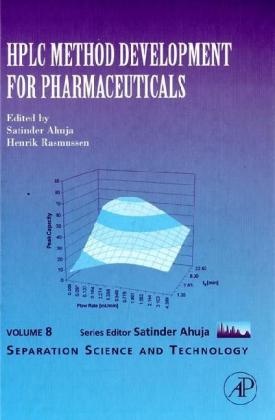Ulteriori informazioni
Informationen zum Autor Satinder Ahuja is a leading expert on water quality improvement. He earned his PhD in analytical chemistry from the University of the Sciences in Philadelphia. He worked for Novartis Corp. in various leadership positions for over 25 years and taught as an adjunct professor at Pace University for over 10 years. As president of Ahuja Consulting, he advises on water quality issues relating to chemicals and pharmaceuticals. A member of the executive committee of the Rivers of the World Foundation (ROW), Dr. Ahuja has organized numerous global symposia on improving water quality, including presentations for the American Chemical Society and UNESCO. Dr. Ahuja has published numerous papers and more than 25 books. His latest books are Contaminants in Our Water (ACS, 2020); Evaluating Water Quality to Prevent Future Disasters (Elsevier, 2019); Advances in Water Purification Techniques (Elsevier, 2019); and Chemistry and Water (Elsevier, 2017). Klappentext High pressure, or high performance, liquid chromatography (HPLC) is the method of choice for checking purity of new drug candidates, monitoring changes during scale up or revision of synthetic procedures, evaluating new formulations, and running control/assurance of the final drug product. HPLC Method Development for Pharmaceuticals provides an extensive overview of modern HPLC method development that addresses these unique concerns. Includes a review and update of the current state of the art and science of HPLC, including theory, modes of HPLC, column chemistry, retention mechanisms, chiral separations, modern instrumentation (including ultrahigh-pressure systems), and sample preparation. Emphasis has been placed on implementation in a pharmaceutical setting and on providing a practical perspective. HPLC Method Development for Pharmaceuticals is intended to be particularly useful for both novice and experienced HPLC method development chemists in the pharmaceutical industry and for managers who are seeking to update their knowledge. Zusammenfassung Provides an overview of modern high pressure! or high performance! liquid chromatography (HPLC) method development that addresses various concerns. This work includes a review of the state of the art and science of HPLC! including theory! modes of HPLC! column chemistry! retention mechanisms! chiral separations! and sample preparation. Inhaltsverzeichnis 1. Overview (Satinder Ahuja). 2. HPLC Theory (Y.V. Kazakevich). 3. HPLC Columns and Packings (U.D. Neue et al .). 4. Column Characterization and Selection (D. Visky). 5. Chiral Separations (Xiande Wang et al .). 6. Contemporary Liquid Chromatographic Systems for Method Development (M. Swartz). 7. Hyphenated Techniques (D.L. Norwood et al .). 8. HPLC Sample Preparation (G. Slack, N.H. Snow). 9. Instrument and Software Qualification and Validation (D. Van Geel). 10. Pharmaceutical Development: From Pre-clinical to Post Approval (K. Bynum). 11. HPLC Method Development for Drug Discovery LC-MS Assays in Rapid PK Applications (Xiaoying Xu, W. Korfmacher). 12. HPLC Method Development in Early Phase Pharmaceutical Development (H.T. Rasmussen et al .). 13. HPLC Method Development in Late Phase Pharmaceutical Development (M. Ilias Jimidar). 14. Use of HPLC for In-process Testing (C. Richardson). 15. Method Development for Biomolecules (D.E. Raynie, J.L. Driver). 16. Method Validation (M. Ilias Jimidar et al .). 17. Troubleshooting HPLC Methods (H. McNair). 18. Molecularly Imprinted Polymers as Sorbents for Separations and Extractions (M.T. Koesdjojo et al .)....
Sommario
1. Overview (Satinder Ahuja).
2. HPLC Theory (Y.V. Kazakevich).
3. HPLC Columns and Packings (U.D. Neue et al.).
4. Column Characterization and Selection (D. Visky).
5. Chiral Separations (Xiande Wang et al.).
6. Contemporary Liquid Chromatographic Systems for Method Development (M. Swartz).
7. Hyphenated Techniques (D.L. Norwood et al.).
8. HPLC Sample Preparation (G. Slack, N.H. Snow).
9. Instrument and Software Qualification and Validation (D. Van Geel).
10. Pharmaceutical Development: From Pre-clinical to Post Approval (K. Bynum).
11. HPLC Method Development for Drug Discovery LC-MS Assays in Rapid PK Applications (Xiaoying Xu, W. Korfmacher).
12. HPLC Method Development in Early Phase Pharmaceutical Development (H.T. Rasmussen et al.).
13. HPLC Method Development in Late Phase Pharmaceutical Development (M. Ilias Jimidar).
14. Use of HPLC for In-process Testing (C. Richardson).
15. Method Development for Biomolecules (D.E. Raynie, J.L. Driver).
16. Method Validation (M. Ilias Jimidar et al.).
17. Troubleshooting HPLC Methods (H. McNair).
18. Molecularly Imprinted Polymers as Sorbents for Separations and Extractions (M.T. Koesdjojo et al.).
Relazione
"This book is written with pharmaceutical scientists in mind, regardless of their level of experience with HPLC method development. By extension, it would be valuable for managers and regulators as well. It may also be of value to those managing a lab or research program in the academic setting.
The 18 chapters are written by 35 contributors, mostly from the U.S., with just over half from the pharmaceutical industry. The book is divided into two major sections, one a state-of-the-science review of HPLC and one on the unique needs in a pharmaceutical setting. This latter section is what makes the book most useful to the intended audience. It addresses topics such as method development for each phase in the drug development process, strategies for software/hardware validation, and prevention/troubleshooting problems. There is lots of concern for instrument qualification and validation in meeting regulatory requirements. The role of HPLC in tandem with mass spectrometry and other detection methods for assaying biological samples does not receive nearly as much attention.
Assessment: The book is clearly superior to the many books on HPLC methods development which do not address pharmaceutical issues to any great extent, if at all. There is generous use of figures and tables throughout and very little overlap across chapters. Weighted Numerical Score: 88 - 3 Stars" --Review in Doody's 2008, by Joseph Boullata, PharmD(University of Pennsylvania College of Nursing)

